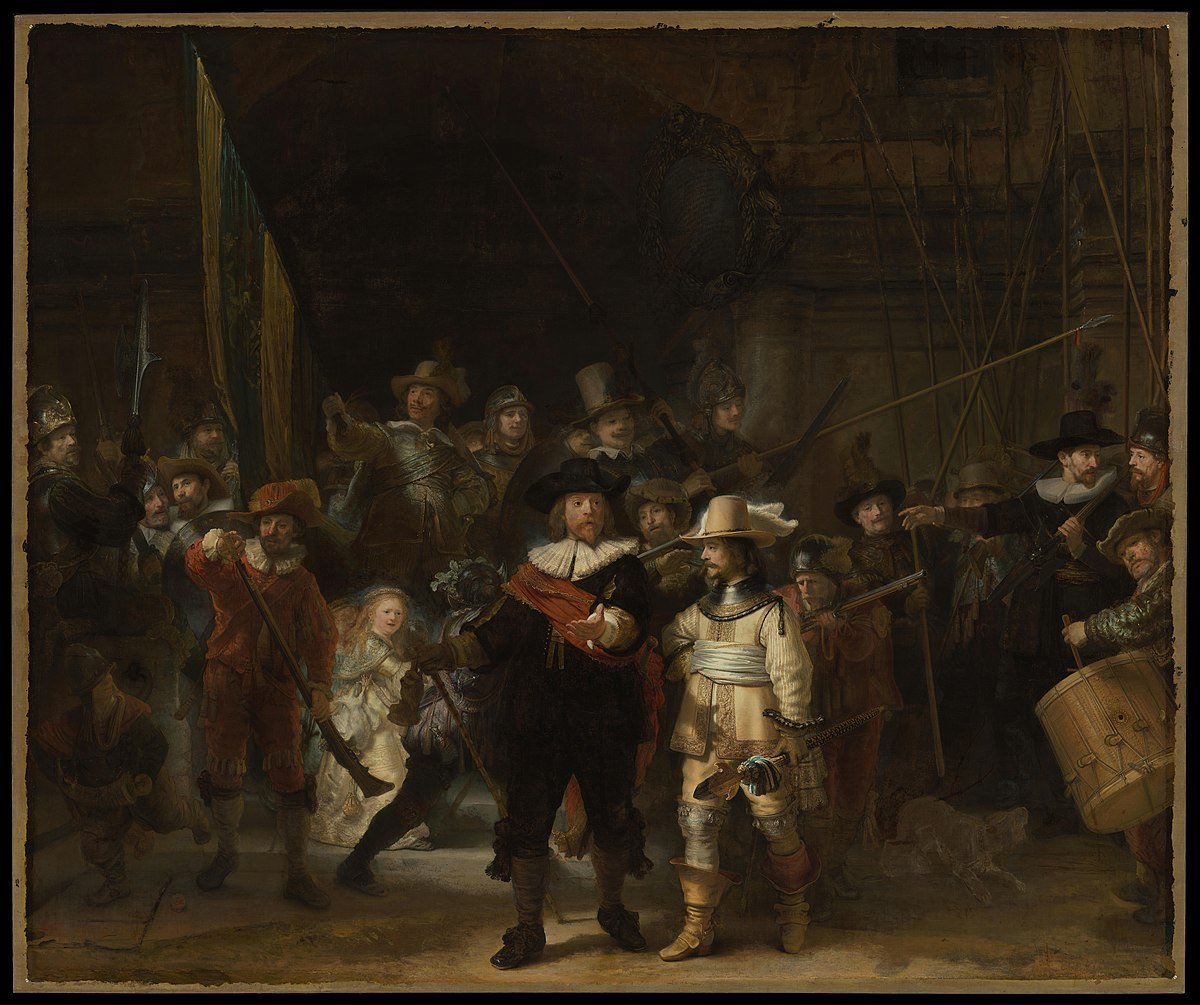Table of Contents
Rembrandt News: A Lead Layer Discovery in The Night Watch
In Rembrandt’s celebrated “The Night Watch” a newly discovered layer beneath the first coat of paint reveals a lead-based substance. This unexpected painting technique, detailed in a Science Advances publication, highlights a unique approach in the artist’s method.
Operation Night Watch, a dedicated research and conservation project, unearthed this finding. Researchers used advanced computational imaging on a sample from the 1642 oil painting masterpiece, revealing this distinctive use of lead, previously unseen in Rembrandt’s work or that of his contemporaries.
The Majesty of Rembrandt’s “The Night Watch”
“The Night Watch,” a celebrated masterpiece by Rembrandt, is more than just a painting; it’s a historical artifact that has captivated audiences for centuries. This iconic work, officially titled “Militia Company of District II under the Command of Captain Frans Banninck Cocq,” stands as a testament to Rembrandt’s mastery in portraying light and shadow, which brings to life the dramatic scene of a militia in motion. The painting’s grandeur not only lies in its visual appeal but also in its complex material history, spanning over four hundred years.
In July 2019, the Rijksmuseum in Amsterdam embarked on an ambitious journey, dubbed Operation Night Watch, to unravel the secrets of this illustrious painting. This initiative represents the largest research and conservation project ever undertaken for “The Night Watch,” aiming to shed light on its creation, the transformation of materials over time, and its current state. The project’s focal point is to understand the painting’s multi-layered structure, including the support, preparatory layers, paint, and varnish layers, to determine the optimal conservation treatment.
Historical Context
The Evolution of “The Night Watch”
The journey of Rembrandt’s “The Night Watch” through the annals of time is as intriguing as the painting itself. Created in 1642, it diverged from the typical static militia portraits of the era, capturing the figures in mid-motion, a testament to Rembrandt’s innovative spirit. However, centuries of exposure have not been kind to the painting, subjecting it to chemical and mechanical alterations.
The essence of Operation Night Watch is rooted in understanding these changes. Researchers aim to delve into the painting’s complex structure, comprising various layers from the support to the varnish, to comprehend the transformation of its materials over time. This detailed study is pivotal in revealing the original techniques used by Rembrandt and the ensuing degradation processes.
Technical Analysis
Unveiling the Layers of “The Night Watch”
In the pursuit of conserving “The Night Watch,” a crucial aspect is the detailed analysis of its preparatory layers. This phase of the project introduced groundbreaking synchrotron-based techniques, employing correlated x-ray fluorescence and x-ray ptychographic nano-tomography. These advanced methods marked a significant leap from traditional 2D microscopic analysis, allowing for a more comprehensive 3D understanding of the paint samples.
Through this sophisticated approach, researchers sought to gain insights into the heterogeneous nature of historic paint systems, which typically involve a complex mix of organic and inorganic components. The aim was to transcend the limitations of conventional imaging techniques and achieve a deeper understanding of the painting’s morphology and state of preservation.
Findings
A Groundbreaking Discovery
The meticulous analysis of “The Night Watch” led to a groundbreaking discovery—a previously unknown lead-containing layer beneath the quartz-clay ground. This finding is crucial as it potentially explains the presence of lead soap protrusions in areas where no other lead components were visible. The use of synchrotron-based correlated x-ray fluorescence and ptychographic nano-tomography revealed this layer in 3D, offering unprecedented insights into the painting’s condition and composition. These techniques also facilitated the visualization of components not detectable by hard x-ray fluorescence, such as the organic fraction and quartz, providing a more complete picture of the painting’s preparatory layers.
Implications for Conservation
Preserving Rembrandt’s Legacy
The discovery of the lead-containing layer beneath “The Night Watch” has significant implications for its conservation. This layer, possibly applied for protection against humidity, challenges previous understandings and opens new avenues for preservation strategies. The findings underscore the importance of advanced technologies in art conservation, allowing for a more informed approach in preserving such historic masterpieces. This study not only enhances our comprehension of Rembrandt’s techniques but also sets a precedent for future conservation efforts in the realm of cultural heritage.








